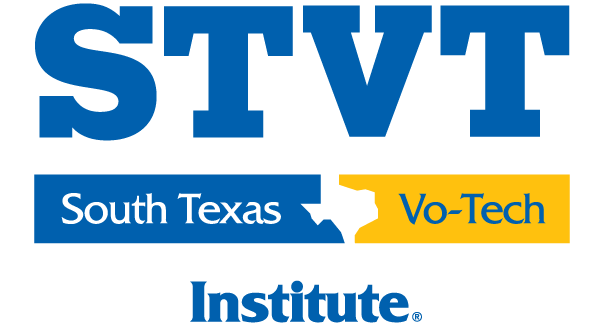If you’re ready to start a career in the trades but worried about the price tag, you’re not alone. Many students ask: “How much does trade school actually cost in Texas — and is it affordable?”
The answer: Much more affordable than you think — especially with financial aid and fast training timelines.
Here’s a breakdown of typical tuition costs and how to make it work.
Average Cost of Trade School in Texas
In Texas, trade school programs — including those at STVT (South Texas Vocational Technical Institute) — can cost between $15,000 and $21,000 total.
This usually includes:
- Tuition
- Books & materials
- Lab fees
- Uniforms or toolkits (depending on the program)
Shorter Programs = Lower Overall Cost
Trade schools are designed to get you trained for a career quickly — without the long timelines or high tuition of a four-year university. While a bachelor’s degree can cost $90,000+ over four years (plus housing and loan interest), STVT’s career training programs are much shorter and more affordable.
How Much Does STVT Cost Compared to SCI in 2025? (Tuition Cost & Total Program Cost)
Here’s a look at how STVT tuition compares to SCI (Southern Careers Institute) — one of the most common trade school alternatives in South Texas:
Tuition Comparison: STVT vs. SCI (2025)
| Program | STVT Total Tuition (Avg) | STVT Total Program Charges (Avg) | Program Offered at STVT | UTI Total Tuition (Avg) | UTI Total Program Charges (Avg) | Program Offered at UTI | Total Program Savings (STVT) |
|---|---|---|---|---|---|---|---|
| Automotive Service Technician | $22,262 | $26,227 | Yes | $44,533 | $45,213 | Yes | $18,936 |
| Diesel-Heavy Truck Technician | $18,900 | $26,140 | Yes | $40,800 | $41,746 | Yes | $15,606 |
| Heating, Ventilation, Air Conditioning, & Basic Refrigeration | $16,450 | $19,900 | Yes | $20,025 | $20,025 | Yes | $125 |
| Welding | $17,892 | $22,503 | Yes | $24,133 | $24,453 | Yes | $1,950 |
| Medical Clinical Assistant | $20,400 | $24,040 | Yes | Not offered | Not offered | No | NA |
| CDL Training: Class A Tractor Trailer | — | $4,250 | Yes | Not offered | Not offered | No | NA |
| CDL Training: Class B | — | $4,000 | Yes | Not offered | Not offered | No | NA |
| Diesel Technician Basics | — | $5,800 | Yes | Not offered | Not offered | No | NA |
| Electrical | $16,250 | $21,040 | Yes | Not offered | Not offered | No | NA |
| Medical Billing and Coding* | $24,480 | $28,840 | Yes | Not offered | Not offered | No | NA |
Note: Data based on publicly available tuition info (2025). Final cost may vary by campus and financial aid eligibility.
Why STVT May Be the More Affordable Choice
- Lower base tuition than SCI in nearly every category
- Faster program completion (many programs finish in 10–15 months or less)
- Multiple scholarship and grant options for Texas residents
- Campuses across South Texas (Brownsville, McAllen, Corpus Christi, Weslaco, San Antonio, Arlington)
🔍 Tip: Don’t Choose a School Based on Tuition Alone
While STVT offers affordable tuition, it’s also important to compare:
- Program quality and outcomes
- Job placement support
- Hands-on training (externships, labs, certifications)
- Class schedules and campus location
🎓 Next Step: Talk to a financial aid advisor to compare your actual out-of-pocket cost after grants, FAFSA, and scholarships.
Financial Aid Can Lower the Cost
To apply for financial aid you’ll need to complete the Free Application for Federal Student Aid (FAFSA) to determine which of the specific programs below you may qualify for:
- Pell Grants
- Federal student loans
- Military & veteran benefits
- Workforce development opportunities
Learn More About STVT Financial Aid Options
Other Ways to Save
- Employer Tuition Reimbursement (especially for CDL or HVAC training)
- Scholarships for career changers
- School-based scholarships
- STVT’s Financial Aid Team can help you apply for multiple sources of support
FAQ: Trade School Costs in Texas
Q: Is trade school cheaper than community college?
A: In some cases, yes — especially when you factor in the shorter timeline and earlier entry into the workforce.
Q: Can I attend part-time to manage the cost?
A: Some programs offer flexible schedules or payment plans to help you budget.
Q: Can I use a scholarship and FAFSA together?
A: Yes — many students use a mix of grants, scholarships, and aid to reduce out-of-pocket costs.


